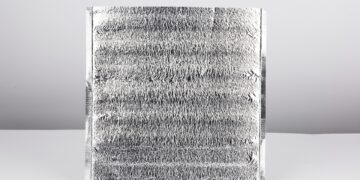Working with concrete isn’t just about having the brawn to mix and mold it into shape; it’s also about having the right tools to safely achieve a precise finish. Whether you are a DIY enthusiast, a concrete artisan, or a construction worker, this compiled list of tools you need when working with concrete will ensure you’re ready to go.
Concrete Saw
A concrete saw is indispensable because it cuts through multiple materials besides concrete, such as masonry, brick, asphalt, tile, and other solid materials. Professionals often use this tool for making cuts for expansion joints, removing damaged sections of concrete, or cutting through layers for installations. When using a concrete saw, always ensure you and your team wear protective gear and follow the manufacturer’s guidelines. The dust and debris created during cutting can be hazardous, so proper dust management systems and work practices are crucial.
Trowel Set
Trowel sets are foundational tools for achieving the desired concrete surface finish. The variety includes pointing, margin, and finishing trowels, each designed for different stages of the concrete setting process. Pointing trowels are great for small, detailed areas, margin trowels handle the edges and corners, and finishing trowels smooth out large surfaces. Techniques such as angling the trowel correctly and applying consistent pressure are critical for achieving your desired finish.
Concrete Mixer
The backbone of any concrete project is how well you mix the concrete. Varieties range from small, portable mixers to large commercial models. Whether you’re working with a stationary mixer or a wheelbarrow and mixing hoe, the goal is to obtain a uniform mix with the right consistency. Adding the correct proportions of water, aggregate, and concrete mix is pivotal—too much water and your concrete may weaken; too little and it won’t pour well.
Drill Bits
Drilling into concrete requires specific drill bits that can cut through incredibly hard material. The best drill bits to use on concrete depend on your end goal. For example, carbide-tipped masonry bits are resilient and penetrate without excessive force, and diamond core drill bits improve cutting strength. The drill bit you choose will drastically improve the quality of your concrete project.
Additional Tools To Consider
Among others, tools such as concrete and bull floats help bring the cream to the surface and smooth the concrete before it sets completely. Concrete edgers add a beveled edge to the sides, preventing chipping and creating a polished look. Each tool has a specific purpose and contributes to the finished model.
Creating structures and artworks with concrete is a craft that melds strength with subtlety. The outcome relies heavily on what tools you needand have on hand. The right tool can make a challenging job much more manageable and the results significantly more gratifying. So before you pour that next slab or carve that new design, ensure your toolkit is as ready as you are to handle the demands of working with concrete.




















































































